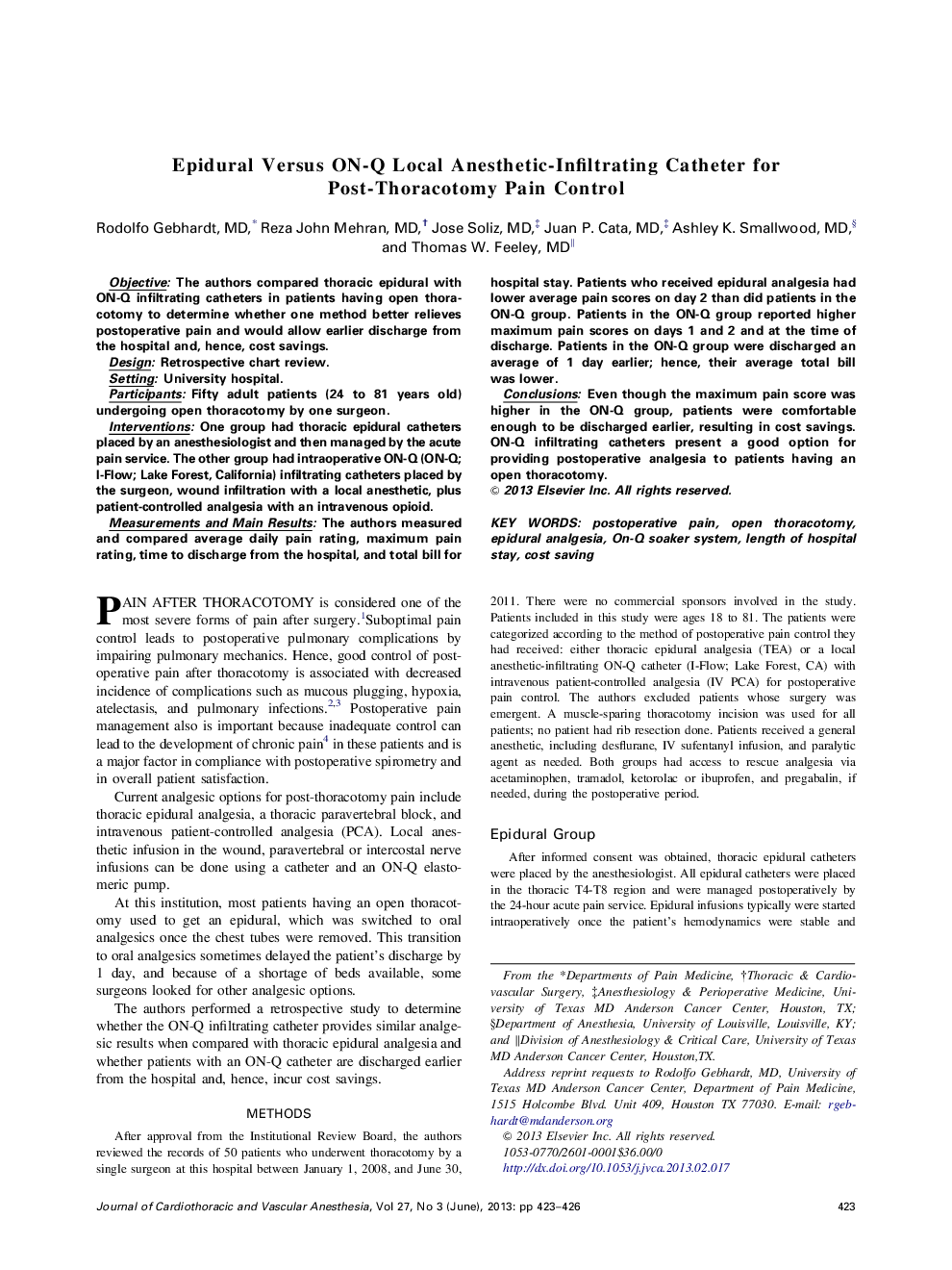| Article ID | Journal | Published Year | Pages | File Type |
|---|---|---|---|---|
| 2759472 | Journal of Cardiothoracic and Vascular Anesthesia | 2013 | 4 Pages |
ObjectiveThe authors compared thoracic epidural with ON-Q infiltrating catheters in patients having open thoracotomy to determine whether one method better relieves postoperative pain and would allow earlier discharge from the hospital and, hence, cost savings.DesignRetrospective chart review.SettingUniversity hospital.ParticipantsFifty adult patients (24 to 81 years old) undergoing open thoracotomy by one surgeon.InterventionsOne group had thoracic epidural catheters placed by an anesthesiologist and then managed by the acute pain service. The other group had intraoperative ON-Q (ON-Q; I-Flow; Lake Forest, California) infiltrating catheters placed by the surgeon, wound infiltration with a local anesthetic, plus patient-controlled analgesia with an intravenous opioid.Measurements and Main ResultsThe authors measured and compared average daily pain rating, maximum pain rating, time to discharge from the hospital, and total bill for hospital stay. Patients who received epidural analgesia had lower average pain scores on day 2 than did patients in the ON-Q group. Patients in the ON-Q group reported higher maximum pain scores on days 1 and 2 and at the time of discharge. Patients in the ON-Q group were discharged an average of 1 day earlier; hence, their average total bill was lower.ConclusionsEven though the maximum pain score was higher in the ON-Q group, patients were comfortable enough to be discharged earlier, resulting in cost savings. ON-Q infiltrating catheters present a good option for providing postoperative analgesia to patients having an open thoracotomy.
